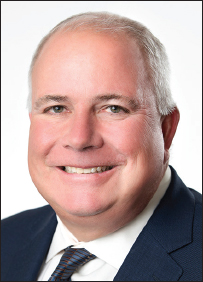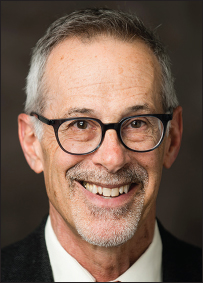Appendix B
Panelists’ Biographies

SABINA ALKIRE directs the Oxford Poverty and Human Development Initiative (OPHI) and is associate professor of development studies in the Department of International Development at the University of Oxford. Her research interests include multidimensional poverty measurement and analysis, welfare economics, the capability approach, the measurement of freedoms, and human development.
Together with James Foster, she developed the Alkire-Foster method for measuring multidimensional poverty, a flexible technique to create measures tailored to each context. It has been implemented empirically to produce the Multidimensional Poverty Index (MPI), a tool to identify who is poor by considering the range of deprivations they suffer. The MPI is a headline figure of poverty that shows how people are poor nationally as well as by areas and groups, and by each indicator. It is always accompanied by a detailed information platform for policy design.
In 2015–16 Dr. Alkire was the Oliver T. Carr Professor of International Affairs and Professor of Economics at George Washington University. Previously, she worked at the Global Equity Initiative at Harvard University, the UN Commission on Human Security, and the World Bank’s Poverty and Culture Learning and Research Initiative.
She holds a master’s and doctorate in economics from the University of Oxford.

PAM CHENG joined AstraZeneca in 2015 as executive vice president of global operations and information technology (IT), guiding the company’s manufacturing, supply chain, procurement, and IT across 18 countries and leading a team of over 19,000. Under her leadership, AstraZeneca global operations has transformed significantly, driving top performance across the business while delivering value back to the enterprise. The next phase of transformation includes the convergence of operational excellence and digital innovation, building the “factory of the future.”
Before AstraZeneca she spent 18 years in global manufacturing, supply chain, and commercial roles at Merck/MSD. As president of MSD China, she was responsible for MSD’s entire business in China—sales and marketing, commercial operations, and oversight of manufacturing and research and development. Prior to that, she was head of global supply chain management and logistics for Merck and led the transformation of Merck supply chains across the global supply network. Before joining the biopharmaceutical industry, she worked in engineering and project management roles at Universal Oil Products, Union Carbide Corporation, and GAF Chemicals.
Ms. Cheng holds bachelor’s and master’s degrees in chemical engineering from Stevens Institute of Technology and an MBA in marketing from Pace University.

PAUL McKENZIE is chief operating officer of CSL Limited, a global biotechnology company with a portfolio of life-saving medicines, including those that treat hemophilia and immune deficiencies as well as vaccines to prevent influenza. He leads the company’s global end-to-end operations organization and its accompanying strategy for achieving safety, quality, reliability, and innovation. He has responsibility for CSL Plasma and its network of more than 260 collection centers in the United States and Europe, as well as manufacturing, quality, engineering, environment, health and safety, business resiliency, business technology, supply chain, procurement, business services, and enterprise excellence. In July 2020 he took on
additional responsibilities, including Seqirus, one of the world’s largest influenza vaccine providers and a partner in pandemic preparedness.
Prior to joining CSL, Dr. McKenzie was executive vice president of pharmaceutical operations and technology at Biogen, responsible for asset management, technical development, global manufacturing, supply chain operations, quality, and engineering. He also has held senior roles in R&D and manufacturing for Johnson & Johnson, Bristol Myers Squibb, and Merck, earning a reputation as a patient-focused business leader.
Dr. McKenzie was elected to the NAE in 2020. He has served on numerous professional and academic boards.
He holds a BS from the University of Pennsylvania and a PhD from Carnegie Mellon University, both in chemical engineering.

WILLIAM B. ROUSE is a research professor in the McCourt School of Public Policy and senior fellow in the office of the senior vice president for research, both at Georgetown University; professor emeritus and former chair of the School of Industrial and Systems Engineering at the Georgia Institute of Technology; and principal at Curis Meditor, a firm focused on the health of people, processes, organizations, and society.
His research focuses on understanding and managing complex public-private systems such as healthcare delivery, higher education, transportation, and national security, with emphasis on mathematical and computational modeling of these systems for the purpose of policy design and analysis.
Dr. Rouse has written numerous articles, book chapters, and books, including Failure Management (Oxford, 2020), Computing Possible Futures (Oxford, 2019), and Universities as Complex Enterprises (Wiley, 2016). He has also edited or coedited a number of books, including Perspectives on Complex Global Challenges (Wiley, 2016), Engineering the System of Healthcare Delivery (IOS Press, 2010), The Economics of Human Systems Integration (Wiley, 2010), Enterprise Transformation: Understanding and Enabling Fundamental Change (Wiley, 2006), and the best-selling Handbook of Systems Engineering and Management (Wiley, 1999, 2009).
Among many advisory roles, he has served as chair of the Committee on Human Factors (now Board on Human Systems Integration) of the
National Academies of Sciences, Engineering, and Medicine, and as a member of the advisory committee for the National Academies’ Division of Behavioral and Social Sciences and Education, the US Air Force Scientific Advisory Board, and the DoD Senior Advisory Group on Modeling and Simulation.
Dr. Rouse is an NAE member and a fellow of the Institute of Electrical and Electronics Engineers, International Council on Systems Engineering, Institute for Operations Research and Management Science, and Human Factors and Ergonomics Society.
He received his BS in mechanical engineering from the University of Rhode Island, and his SM and PhD, both in systems engineering, from the Massachusetts Institute of Technology.

DAVID R. WALT is the Hansjörg Wyss Professor of Biologically Inspired Engineering at Harvard Medical School, professor of pathology at Harvard Medical School and Brigham and Women’s Hospital, a Core Faculty Member of the Wyss Institute at Harvard University, a Howard Hughes Medical Institute Professor, and codirector of the Mass General Brigham Center for COVID Innovation. Previously, he was University Professor at Tufts University.
His laboratory pioneered the development of microwell arrays, which revolutionized the field of genetic analysis, and introduced the idea of digital protein detection by developing a high-throughput technology for performing single molecule analysis. His research is aimed at applying new technologies to address unmet clinical diagnostics needs.
Dr. Walt is the scientific founder of Illumina Inc. and Quanterix Corp., and has cofounded other life sciences startups including Ultivue, Inc., Arbor Biotechnologies, Sherlock Biosciences, and Vizgen, Inc.
He has received numerous national and international awards and honors for his fundamental and applied work in the field of optical microwell arrays and single molecules. He is a member of the National Academy of Engineering and National Academy of Medicine; a fellow of the American Academy of Arts and Sciences, American Institute for Medical and Biological Engineering, American Association for the Advancement of Science, and National Academy of Inventors; and an inductee to the National Inventors Hall of Fame.
He serves on the National Academies’ Standing Committee for Emerging Infectious Diseases and 21st Century Health Threats and Board on Life Sciences, and previously cochaired the Board on Chemical Sciences and Technology.
He has a BS in chemistry from the University of Michigan and a PhD in chemical biology from the State University of New York at Stony Brook.

DANIEL WORK is an associate professor in the departments of civil and environmental engineering, electrical engineering and computer science, and the Institute for Software Integrated Systems at Vanderbilt University. He has held research appointments at the University of Illinois at Urbana-Champaign (2010–17), Institute for Pure and Applied Mathematics (2015, 2020), Microsoft Research Redmond (2009), and Nokia Research Center Palo Alto (2007–09).
Dr. Work pioneered methods for monitoring and controlling road traffic using vehicles, rather than fixed infrastructure, to sense and control road congestion. In 2015 his team was the first to experimentally demonstrate that “phantom” traffic jams, which seemingly occur without an obvious cause but are due to human driving behavior, can be eliminated via control of a small fraction of automated vehicles in the flow. In 2008, as a researcher at Nokia Research Center Palo Alto in collaboration with UC Berkeley and Caltrans, he designed the first GPS smartphone–based traffic estimation algorithm, which was prototyped in a 100-car experiment in California and commercialized through Nokia.
He is a recognized transportation expert whose work has appeared in media outlets including ABC’s Good Morning America, Reuters, Wired, and MIT Technology Review. He received a 2018 Gilbreth Lectureship from the NAE and a 2014 CAREER Award from the National Science Foundation.
He earned a BS from Ohio State University in 2006, and an MS (2007) and PhD (2010) from UC Berkeley, all in civil and environmental engineering.
DEANNE BELL is an engineer, television host, and entrepreneur. Her television hosting credits include PBS, ESPN, Discovery Channel, National Geographic, DIY Network, and most recently CNBC’s Make
Me a Millionaire Inventor. She is also the founder and CEO of Future Engineers, an education technology company that engages students in online contests and challenges. Future Engineers’ inaugural competition, developed with the ASME Foundation and NASA, produced historic achievements including the first student-designed 3D print in space. Her company has since become a US Department of Education SBIR awardee, and was selected by NASA to host the Mars 2020 “Name the Rover” contest.

Previously she worked at Raytheon for three years as an optomechanical engineer. She focused on packaging FLIR into a helicoptermounted gimbal, involving the redesign of the afocal telescope and the packaging of the cryo-cooled imager and CCD camera. She then worked for other R&D programs at the company, including as head of the mechanical design and build of a synthetic aperture ladar (SALTI) optical test bench.
She earned her BS in mechanical engineering at Washington University in St. Louis and was selected by its McKelvey School of Engineering to receive the Young Alumni Award in 2019.






